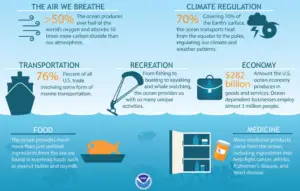Table of Contents
Biorock technology | Coral Restoration | UPSC – IAS
Coral reefs are one of the most biologically diverse marine ecosystems on the Earth. Ecologically, coral reefs are important because they are the counterpart to the tropical rain forest in terms of species diversity and biological productivity in the Ocean. Coral reef enables the formation of associated eco-systems which allow the formation of essential habitats, fisheries and livelihoods.
-
- Coral reefs are the backbone of life in the oceans.
- They are a critical part of the web of life on our planet.
- Biorock is the name given to the substance formed by electro accumulation of minerals dissolved in seawater on steel structures that are lowered onto the sea- bed and are connected to a power source.
- The technology works by passing a small amount of electrical current through electrodes in the water.
- When a positively charged anode and negatively charged cathode are placed on the seafloor, with an electric current flowing between them, calcium ions combine with carbonate ions and adhere to the structure (cathode).
- This results in calcium carbonate formation. Coral larvae adhere to the CaCO3 and grow quickly.
- The fragments of broken corals are tied to the biorock structure, where they are able to grow at least four to six times faster than their actual growth as they need not spend their energy in building their own calcium carbonate skeletons.
- A biorock structure was installed one nautical mile off the Mithapur coast in the Gulf of Kachchh
Major threats for the corals | UPSC – IAS
The vast diversity of animal and plant species that contributes to its system and genetic heritage that it represents are increasingly at risk, since the last few decades.
- Natural: Environmental-Temperature, Sediment Deposition, Salinity, pH, etc.
- Anthropogenic: Mining, Bottom Fishing, Tourism, pollution, etc.
Coral bleaching | UPSC – IAS
- Coral bleaching occurs when coral polyps expel algae that live inside their tissues.
- Coral species live within a relatively narrow temperature margin hence low and high sea temperatures can induce coral bleaching.
- When corals are exposed to high concentrations of chemical contaminants or pathogens, coral bleaching happens.
Factors responsible for Coral Bleaching | UPSC – IAS
- Runoff from agricultural land and chemical pollution results in eutrophication and subsequent oxygen depletion.
- Destructive fishing and boating practices lead to habitat destruction and disintegration of reef ecosystem.
- Marine Pollution: Incidents such as increase in sea transport, oil spill etc. destroy coral reefs
- Uncontrolled tourism activities lead to breakage of coral colonies and leads to tissue damage.
- Coastal construction and shoreline development results in heavy sedimentation, which can lead to coral reef destruction.
- Introduction of invasive species in ocean by humans too lead to change in the coral ecosystem.
- Coral mining: Live coral is removed from reefs for use as bricks etc.
- Ocean acidification- With increased pollution, Carbon Dioxide is absorbed by Ocean leading to rise in Carbonic acid in water. As Coral has Calcium carbonate as main component, it reacts with Carbonic acid and slowly dissolves down.
Consequences of Coral Bleaching | UPSC – IAS
- It will impact marine ecosystem, as coral reefs are some of the most bio diverse and productive ecosystems.
- Reefs act as natural barriers to shorelines, protecting them from the effects of moving water. As coral reefs die, coastlines become more susceptible to damage and flooding from storms, hurricanes, and cyclones.
- Without coral reefs, ocean will not be able to absorb as much CO2, leaving more CO2 in atmosphere.
- Loss of the coral reefs will have a devastating impact on tropical countries’ economies, food supplies, and safety of their coastal communities.
Measures taken in India | UPSC – IAS
- Government of India has taken steps to protect its coral reefs under Coastal Ocean Monitoring and Prediction system (COMAPS), Land Ocean Interactions in Coastal zones (LOICZ) and Integrated Coastal and Marine Area Management (ICMAM).
- Government of India has notified Coastal Regulation Zones (CRZ) and has setup National Coastal Zone Management Authority and State Coastal Zone Management Authority to protect coral reefs.
- Coral Bleaching Alert System (CBAS)- a service initiated from INCOIS uses the satellite derived Sea Surface Temperature (SST) in order to assess the thermal stress accumulated in the coral environs.
- Coral Reef Recovery Project- is a joint venture of Wildlife Trust of India and the Gujarat Forest Department, supported by Tata Chemicals Limited (TCL).




